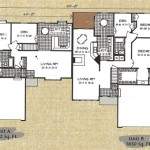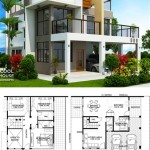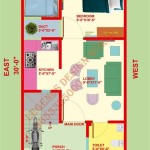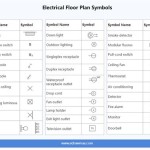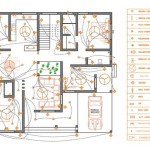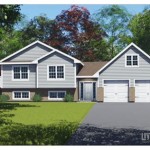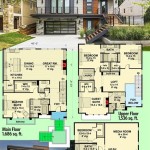House Plans For Small Lake Cottage: Optimizing Space and Design
Designing a small lake cottage presents unique opportunities and challenges. The goal is to create a comfortable and functional living space that maximizes the available area while harmonizing with the natural beauty of the lakeside environment. Choosing the right house plan is crucial for achieving this balance. Several factors influence the selection process, including the size and shape of the lot, local building codes, the intended use of the cottage (seasonal or year-round), and the desired aesthetic.
Small lake cottages often prioritize outdoor living, integrating decks, porches, and patios into the design. Interior spaces are typically designed to be open and airy, with an emphasis on natural light. Efficient use of space is paramount, often achieved through multi-functional furniture, built-in storage, and strategically placed windows. Careful consideration of these elements ensures a comfortable and enjoyable lakeside retreat.
Prioritizing Space Efficiency in Small Cottage Design
Space efficiency is the cornerstone of successful small lake cottage design. Every square foot must be utilized effectively to create a functional and livable environment. This requires a thoughtful approach to layout, furniture selection, and storage solutions. Open floor plans, which combine the living, dining, and kitchen areas into a single integrated space, are a common strategy for maximizing the feeling of openness and reducing wasted space.
Multi-functional furniture plays a vital role in space-saving designs. Sofa beds, dining tables that can be expanded or folded away, and storage ottomans are examples of pieces that serve multiple purposes. Built-in storage solutions, such as shelves, cabinets, and drawers, are also highly effective in minimizing clutter and maximizing available space. Utilizing vertical space by installing shelves that reach the ceiling is another strategy for optimizing storage capacity.
The careful placement of windows and doors can also contribute to a sense of spaciousness. Large windows and glass patio doors allow natural light to flood the interior, making the space feel brighter and more open. Strategic placement of windows can also provide views of the lake, further enhancing the connection to the natural environment. Minimizing hallways and unused nooks and crannies is also essential for maximizing usable square footage.
Consider the needs of the occupants when planning the layout. Will the cottage be used primarily for weekend getaways or as a more permanent residence? How many people will typically be staying in the cottage? Answering these questions will help determine the optimal number of bedrooms and bathrooms, as well as the size and configuration of the living spaces. In some cases, bunk beds or loft areas can be used to accommodate additional guests without sacrificing valuable floor space.
Finally, consider the use of modular construction. Modular homes are built in a factory environment and then transported to the building site, offering several advantages for small lake cottage construction. Modular construction can significantly reduce construction time and costs, and it also allows for greater design flexibility. Modules can be combined in various ways to create a custom floor plan that meets the specific needs of the homeowner.
Integrating Indoor and Outdoor Living Spaces
One of the defining characteristics of a lake cottage is its connection to the surrounding natural environment. Integrating indoor and outdoor living spaces is crucial for maximizing enjoyment of the lakeside setting. Decks, porches, and patios serve as transitional zones between the interior and exterior, providing spaces for relaxation, entertainment, and dining.
Decks and patios should be designed to complement the architecture of the cottage and the surrounding landscape. Consider using natural materials such as wood or stone to create a seamless transition from the interior to the exterior. The size and configuration of the outdoor living spaces should be appropriate for the intended use. A small deck or patio may be sufficient for a couple, while a larger space may be needed for families or groups of friends.
Screened porches offer a compromise between fully enclosed and open-air spaces. They provide protection from insects and the elements while still allowing occupants to enjoy fresh air and views of the lake. Screened porches can be used for dining, relaxing, or even sleeping, providing a versatile space that can be enjoyed throughout the year.
Consider incorporating outdoor kitchens or grilling areas into the design of the deck or patio. This allows for outdoor cooking and entertaining, further enhancing the connection to the natural environment. Outdoor fireplaces or fire pits can also create a cozy and inviting atmosphere, extending the use of the outdoor spaces into the cooler months.
Large windows and glass patio doors help to blur the lines between the indoor and outdoor spaces, allowing natural light to flood the interior and providing unobstructed views of the lake. Consider using sliding glass doors or folding doors to create a seamless transition between the interior and exterior. This allows for easy access to the deck or patio and creates a feeling of openness and connection to the surrounding environment.
Landscaping plays a vital role in integrating the cottage with its natural surroundings. Choose native plants and trees that are well-suited to the local climate and soil conditions. This will help to create a low-maintenance landscape that blends seamlessly with the natural environment. Consider incorporating pathways and walkways that lead to the lake, encouraging exploration and appreciation of the natural beauty of the lakeside setting.
Optimizing Lake Views and Natural Light
Maximizing lake views and natural light is essential for creating a comfortable and enjoyable living space in a small lake cottage. Windows should be strategically placed to capture the best views of the lake and to allow natural light to penetrate deep into the interior. The orientation of the cottage on the lot should also be considered to optimize sunlight exposure and minimize glare.
Large windows and glass doors are ideal for maximizing lake views. Consider using picture windows in the living room or master bedroom to create a dramatic focal point. Bay windows can also be used to enhance the view and to create a feeling of spaciousness. Skylights can be used to bring natural light into areas that may not receive direct sunlight, such as hallways or bathrooms.
The orientation of the cottage on the lot will affect the amount of sunlight that enters the interior. In general, a south-facing orientation is ideal for maximizing sunlight exposure in the winter months. However, in the summer months, a south-facing orientation can lead to excessive heat gain. Consider using overhangs or awnings to shade the windows during the hottest part of the day. East-facing windows are ideal for capturing morning sunlight, while west-facing windows can provide stunning sunset views.
Window treatments can be used to control the amount of light that enters the interior and to provide privacy. Sheer curtains or blinds can be used to filter sunlight and reduce glare. Blackout curtains can be used in bedrooms to block out light and ensure a good night's sleep. Consider using motorized window treatments for hard-to-reach windows or for added convenience.
The color scheme of the interior can also affect the amount of light that reflects throughout the space. Light colors tend to reflect more light, making the space feel brighter and more open. Dark colors tend to absorb light, making the space feel smaller and more enclosed. Consider using a light and neutral color palette for the walls and ceilings, and then adding pops of color with furniture and accessories.
Reflective surfaces, such as mirrors and polished metal, can also be used to enhance the feeling of brightness and spaciousness. Mirrors can be strategically placed to reflect light and to create the illusion of more space. Polished metal fixtures and hardware can also add a touch of sparkle and reflectivity to the interior.
Finally, consider the use of artificial lighting to supplement natural light, especially during the evening hours. Recessed lighting, pendant lights, and table lamps can be used to create a warm and inviting atmosphere. Consider using LED lighting, which is energy-efficient and long-lasting. Dimmer switches can be used to adjust the brightness of the lights to create the desired ambiance.
The design of a small lake cottage involves a careful balancing act between maximizing space, integrating indoor and outdoor living, and optimizing lake views and natural light. Choosing the right house plan is the first step towards creating a comfortable, functional, and enjoyable lakeside retreat. Thoughtful consideration of these design principles will ensure that the cottage meets the specific needs of the homeowner and harmonizes with the natural beauty of the surrounding environment.

Small House Plan Tiny Cottage Home Or Guest 800 Sq Ft Lake Plans Craftsman Style

Small Cabin Floor Plan 3 Bedroom By Max Fulbright Designs

Open Concept Small Lake House Plans Houseplans Blog Com

Small 3 Bedroom Lake Cabin With Open And Screened Porch

3 Bedroom Small Sloping Lot Lake Cabin By Max Fulbright House Plans Houses Rustic

Tiny House Plan Perfect For Lake

Small Cabin House Plans With Loft And Porch For Fall Houseplans Blog Com

Small Bungalow Cottage House Plan With Porches And Photos

2 Story 5 Bedroom Rustic Lake Cottage House Plan Plans With Photos

Open Concept Small Lake House Plans Houseplans Blog Com

